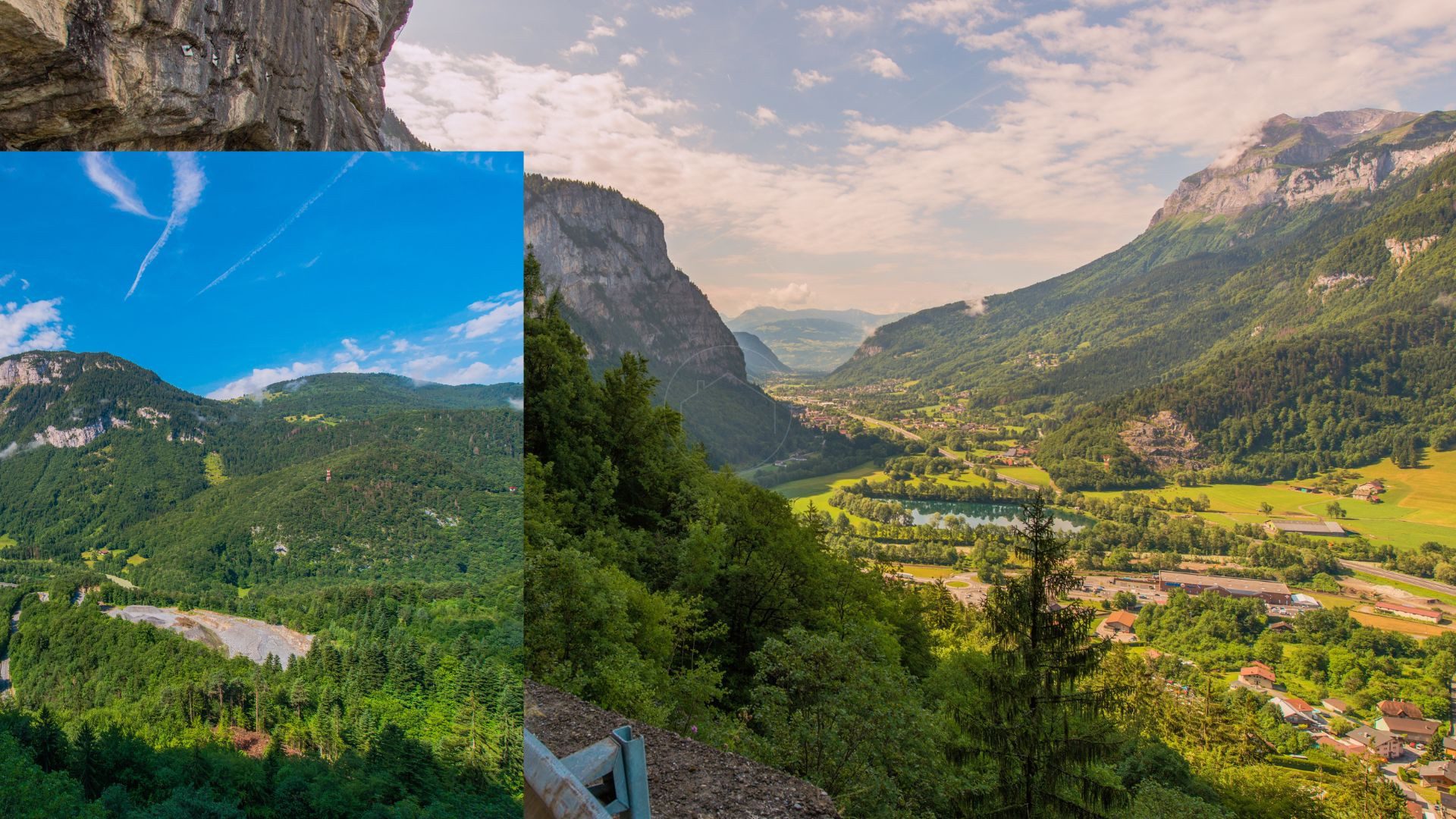Balme, a quaint village in the Chamonix valley
Nestled between Cluses and the village centre, the hamlet of Balme has a rich history. The establishment of a railway station marked its significance. In 1879, the decision to extend the railway from La Roche-sur-Foron to Chamonix was made. The section to Cluses was completed in 1890 by the PLM (Paris-Lyon-Mediterranean) company, and the line to Fayet began service in 1898 after three years of construction. This led to the creation of the Magland station and its two stops: Balme and Oëx. Tourists used the Balme station to reach Carroz before the construction of the departmental road.
A Village with Modest Agriculture
Aside from personal consumption, Balme was not heavily agricultural. The villagers primarily worked in construction, masonry, and screw-cutting. Apart from Marcel Gay’s company, which employed local women as seamstresses, industry did not establish itself in Balme. The village’s development was more attributed to its location between Cluses and the village center, its good sunlight exposure, and its commercial and tourist sectors.
The First Camping Site in Haute-Savoie
Balme was home to the first camping site in Haute-Savoie, which lasted until the 1990s. “In the 70s and 80s, many Dutch tourists visited. We used to throw small pebbles on their tents to make them think it was raining,” recalls Stéphane Appertet. Unlike other hamlets, Balme never had a chapel or a school; children attended the village school by bus. Canyoning has also become popular between Arâches and Magland, with the Rots torrent offering a series of natural pools and waterfalls beloved by enthusiasts.
Balme and Its Caves: A Source of Legends
Magland, with its numerous hamlets, is one of the largest municipalities in the department, rich in heritage, history, and natural beauty. This summer, explore a remarkable site each week.
The Balme caves are fascinating to speleologists, as they have several cavities and some formations. At the crossroads of the road to Carroz d’Arâches and the village of Magland, and shaded by the Platé massif, lies the village of Balme. The name “Balme” likely comes from the Gaulish word “balma,” meaning a natural cavity. These caves have served as refuges and shelters for centuries, fostering legends among the villagers.
Mysterious Legends and Historical Accounts
Locals believed that witches and wizards from Savoie held ceremonies in the caves, led by a terrifying black goat symbolizing the devil. These heretics were persecuted, and monks from Cluses performed exorcisms until the 18th century.
Swiss scientist Horace Bénédicte de Saussure conducted the first scientific description of the caves in 1764, sparking rumours of hidden treasure. These tales attracted tourists for over a century and a half, until the early 20th century. A café-restaurant was even built at the entrance under the archway.
Exploring the Caves
In 1897, physicist Alexandre Le Royer performed the first topographic surveys, though explorations were halted at 600 meters due to a water-filled siphon. It wasn’t until 1961 that speleologists emptied the siphon and discovered nearly two kilometres of galleries. Sadly, these were looted of their stalactites and stalagmites before being restored and stored at the town hall. Some bones and various objects were found, but no treasure. Today, the known network extends over five kilometres with five entrances, some on cliff sides, and features a 161-meter elevation change.
Continuous Discoveries
New galleries are still being discovered. It’s believed the legend of the black goat was fueled by the continuous sound of water in the well. There are even whispers of a walled-in prostitute whose screams can still be heard at night.
Equipped with candles or electric lamps and sometimes a spool of thread to avoid getting lost, the village youth enjoyed exploring the caves: “We spent our Wednesday afternoons there,” recalls Stéphane Appertet. He remembers the water-filled siphon, the acrobatics needed to cross it, and the tangled galleries. “The interesting part is beyond the siphon. Sometimes it seems like there’s even a lower level,” he explains.
Safety and Adventure
Today, access is facilitated by ropes. However, it’s strongly recommended to be accompanied by a professional, as some passages can be difficult and certain areas dangerous with temporary wells or siphons where the unwary can easily become trapped.
Recently, the mountain team of firefighters, consisting of ten agents and three rescuers, intervened to rescue novices trapped in a 60-meter well. Visitors wishing to explore the cave are advised to seek a specialized guide to safely navigate with the appropriate equipment.








